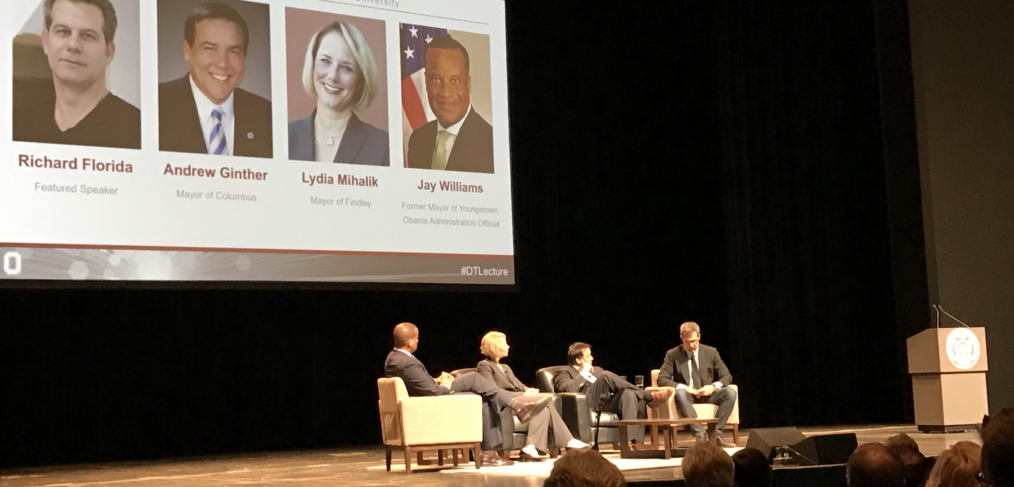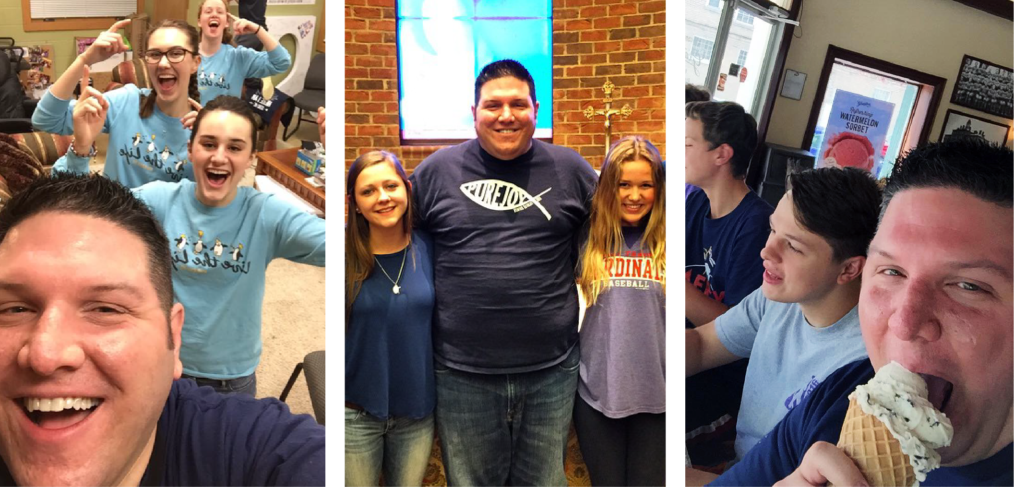Nick Hoffman, a member of #teamME, Recently attended a captivating lecture on the new urban crisis and the disparities that threaten our cities through the Ohio State University’s Discovery Themes Lecture Program. The guest lecturer, Richard Florida, presented a glimpse of his research and findings in his new book, titled The New Urban Crisis, followed by a post-lecture panel. Florida is currently a professor at the University of Toronto, senior editor at the Atlantic, best-selling author, and former Ohio State faculty member.
The new urban crisis interests MurphyEpson because much of our work is with cities and, like our clients, we are devoted to bringing people together to make improvements for the greater good. Keep reading to hear a recap of the event through the lens of Assistant Project Manager + Planner, Nick Hoffman.
The Old Urban Crisis
Florida explained that the urban crisis of the 1960’s and 70’s in the United States centered on the deindustrialization of our economy and years of expansion and flight of whites and affluent into the suburbs. The economic changes, loss of industry and people left a hole in our cities. This model has come to be known as the “hole in the donut”. The missing center within our cities led to the loss of revenue, manpower, and services; not to mention an increase in social issues like crime, violence, drug addiction, teen pregnancy, and infant mortality. It has taken time for many of our successful cities to adjust and refocus their strategy; though some cities still haven’t rebounded, and many will never be what they once were.
The New Urban Crisis
The increase of inequality and rising housing prices are two key issues that still trouble our cities. These issues are coupled today with the gentrification of our cities, increased income segregation, and the disappearance of the middle-class and middle-class neighborhoods. The new urban crisis is also affected by the concentration of high tech development in specific areas of our cities (creating winners and loser neighborhoods), and an increase in poverty and other social issues in the suburbs. This crisis is only exacerbated, as Florida points out, as our nation has also become polarized, snapping back and forth between different philosophies and agendas every four to eight years.
5 Dimensions of the New Urban Crisis
Florida states that there are five key dimensions that contribute to the New Urban Crisis:
- Growing Economic Gap between Superstar Cities and Other Cities. A small handful of cities contain a disproportionate share of the innovative industries, high tech start-ups, and talent which creates inequality.
- Crisis of Success. While superstar cities thrive they also experience a series of set-backs which include unaffordable housing prices for blue-collar, and service workers.
- Disappearing Middle-Class. One of the widest-felt issues of the growing inequality in cities surrounds the disappearance of the middle-class and middle-class neighborhoods. Between “1970 to 2012, families living in middle-class neighborhoods declined from 65 to 40 percent.”
- Suburban Poverty. Today’s suburbs are much different than those in the 1960’s and 70’s; today there are more poor people in the suburbs than there are in cities – 17 million versus 13.5 million.”
- Urbanization in the Developing World. While thousands flock to urbanized areas in developing countries, they do not enjoy the same standards of living compared to the developed world.
Ohio Mayors Weigh In
Florida then facilitated a panel discussion with Columbus Mayor Andrew Ginther, Findlay Mayor Lydia Mihalik, and former Youngstown Mayor and Obama administration official Jay Williams. The discussion centered on the issues Ohio cities face, and what they are doing to combat this urban crisis.
Mayor Ginther discussed how the Smart Columbus initiative is helping to tackle some of these issues and generally becoming more inclusive in decision-making. He discussed the use of new technologies in trying to make citizens’ lives better, specifically through more reliable transportation and workforce development, with a focus on ladders of opportunity for those neighborhoods in poverty. Mayor Mihalik echoed the fact that transportation is also key in smaller cities like Findlay, since 50% of the workforce commutes from outside the county. She recognizes that the industrial jobs are not coming back and development is needed to transform the business and landscape to match the hip urban areas that people today desire. Former Mayor Williams stated that cities like Youngstown need to redefine themselves. There is a physiological effect on citizens as they wait for their city to take off again like parts of Columbus and Cleveland have. Williams said the key is managing the shrinkage and applying new strategies at the neighborhood level.
Florida then discussed how we, as a society, really are dependent on each other. He asked former Mayor Williams, a recent Obama administration official, “is there any hope in Washington D.C. that we can work together?” Williams replied that “there is hope, but there isn’t a one size fits all fix. There are many different places and economical situations facing these communities but all have the same aspirations.”
Mihalik said it all starts with the mayoral ticket (having strong and knowledgeable leaders), power at the local level (compared to the state and federal level), and toning down the pollical rhetoric. Ginther also discussed a disconnect between the federal and local and state levels, and reiterated that all neighborhoods need to have an equal footing. Ginther also emphasized there is a need to invest in opportunities through private-public partnerships, affordable housing, education, transit, and focusing on children from birth to age five.
Overcoming the Crisis
Florida hinted at seven action items in adverting this urban crisis. These strategies include building tax reforms, investing in infrastructure, investing in affordable housing, expanding the middle class, investing in people through job training, engaging in global efforts of emerging world urban areas, and empowering communities and local leaders.
Florida’s overall solution surrounded a theme of “urbanism for all”. He urged for stronger collaboration between cities and regions, because we are connected regionally and work better together. Our country needs to take a hard look in the mirror; yes we are divided now, but both sides need to recognize that we are different. To solve this crisis, we need to set aside our political, cultural, racial, societal, and religious differences and work together.
Finally, I leave you with a quote at the beginning of Florida’s The New Urban Crisis that resonates with our work at MurphyEpson to bring everyone to the table to design urban improvements:
Cities have the capability of providing something for everyone, only because, and only when, they are created for everyone.
– Jane Jacobs, The Life and Death of Great American Cities
Nick Hoffman is our chocolate-loving, Buckeye-cheering, Assistant Project Manager and urban planner. If you live in Columbus and like Raising Canes or Chipotle, you may have seen him standing in line.


